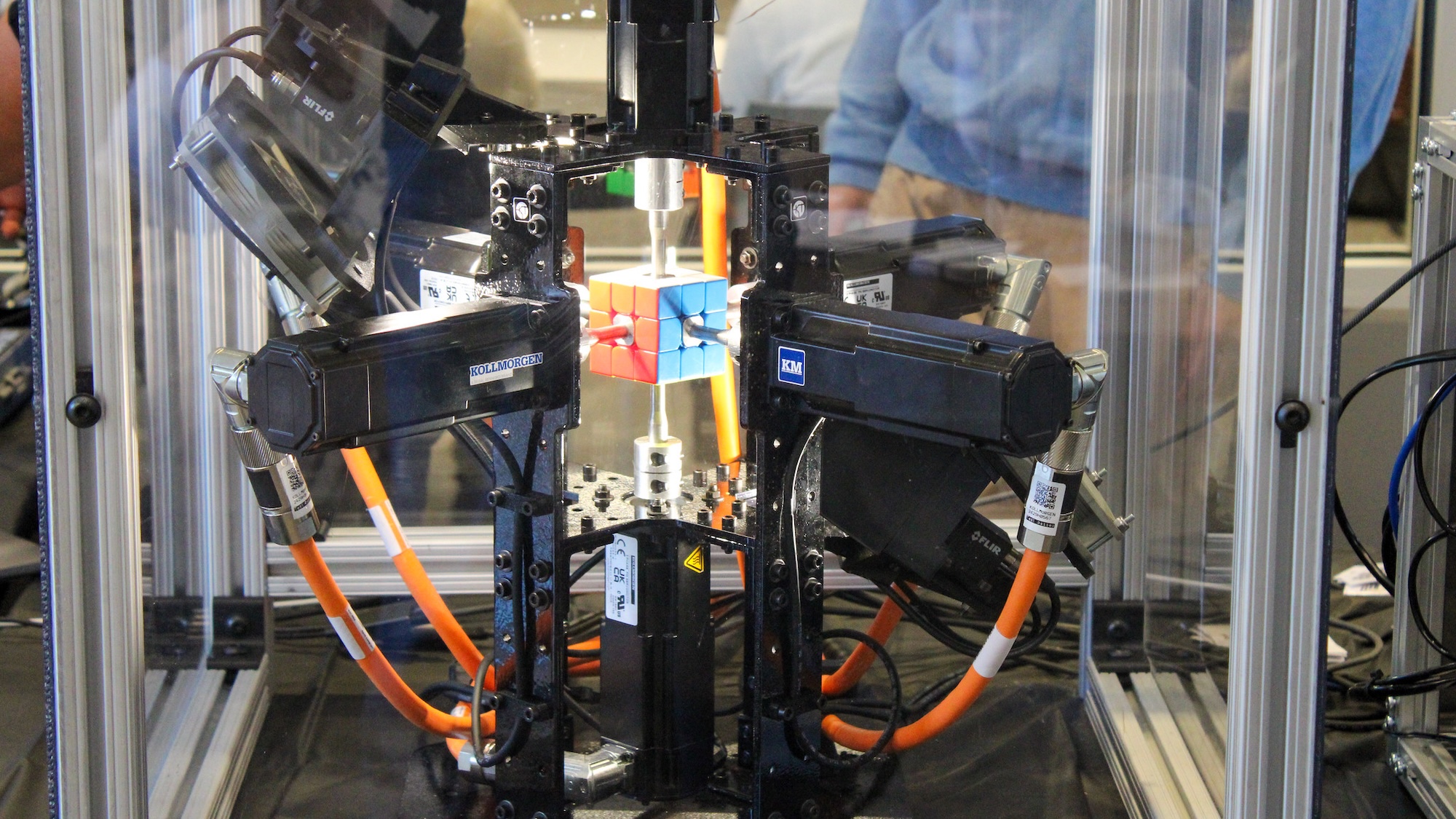Now Reading: College Students Break World Record with Fastest Rubik’s Cube-Solving Robot
-
01
College Students Break World Record with Fastest Rubik’s Cube-Solving Robot
College Students Break World Record with Fastest Rubik’s Cube-Solving Robot

Swift summary
- A team of Purdue University engineering undergraduates has developed “Purdubik’s Cube,” a rubik’s cube-solving robot that set a new Guinness World Record by solving the puzzle in just 0.103 seconds.
- This beats Mitsubishi’s previous record of 0.305 seconds held by its TOKUFASTbot, which utilized advanced servomotors and AI for color-recognition.
- The Purdue team included Matthew Patrohay, Junpei Ota, Aden Hurd, and Alex Berta, who built the robot over one semester after spending months on design optimization.
- Purdubik’s Cube showcases advancements in mechanical and AI engineering but also required custom-built physical cores for stability as high-speed operations caused conventional Rubik’s cubes to disintegrate.
- Human reaction times are far slower than Purdubik’s performance at about 100-200 milliseconds-making the feat nearly incomprehensible visually.
Image 1: Close-up image of Rubik’s cube-solving machine (Credit: Purdue University / Elmore Family school of ECE)
Image 2: thumbnail showing robot solving.
Indian Opinion Analysis
The achievement by Purdue engineers highlights how innovation at smaller institutions can rival companies with extensive resources like Mitsubishi. While this record-breaking speed is more an academic triumph than a commercial one, it underscores future industrial applications for ultra-fast algorithms paired with robust mechanical designs-a field where India is increasingly active through advancements in robotics and AI research.
For India, such breakthroughs reinforce the potential benefits of fostering collaboration among domestic academia and private industry. Harnessing local talent while investing in facilities similar to those seen at Purdue coudl accelerate India’s position globally as an innovator in automation technologies-a critical area amidst rising competition from nations like japan or USA.
Ultimately, while “speed records” have limited practical use currently beyond showcasing technical skill mastery, developments within fields like motion control can ripple into broader markets such as manufacturing or logistics optimization-sectors key to India’s growth strategy moving forward.
























